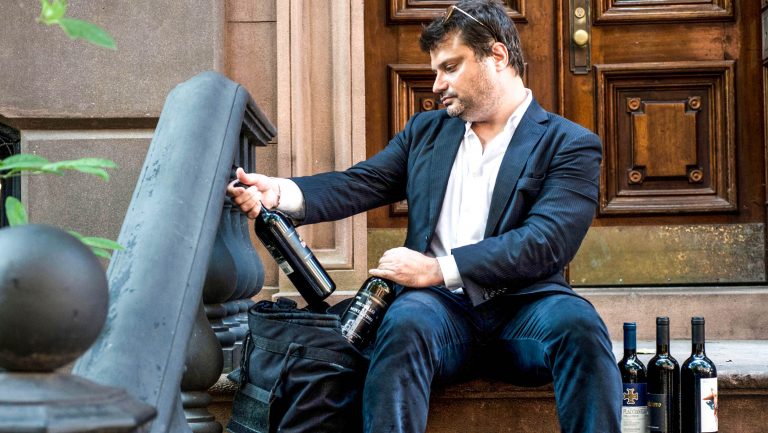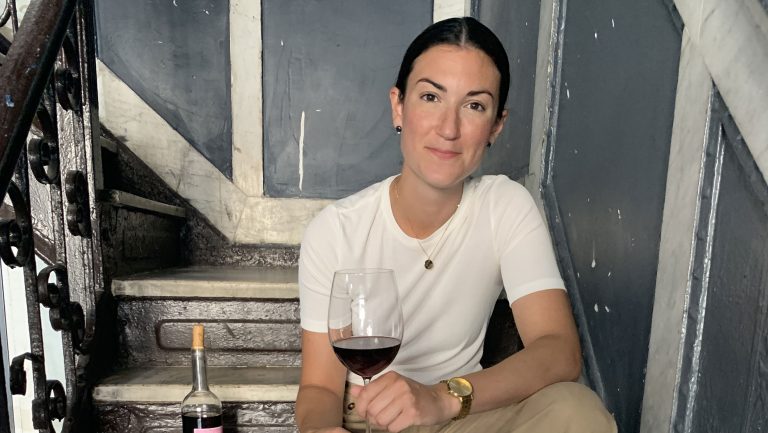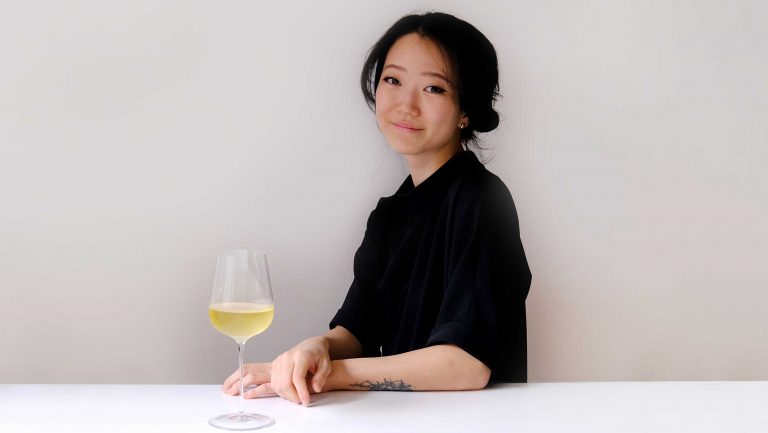In our series In the Bag, wine and spirits sales reps discuss the bottles they’re tasting with customers today.
Much of the wine world is at our fingertips, making it difficult for buyers to resist the urge to seek out the next “hot thing.” Wines vinified in amphorae, lesser-known grapes like Chasselas and Baga, naturally fermented pét-nats—it’s tempting to overlook the standards in favor of the new and different. But Vince Attard, a sales rep for Vinifera Imports, based in Long Island, New York, is content to hang with the classics, having worked with many of Italy’s most iconic regions and producers for the entirety of his nearly 13-year tenure at the company.
“I’ve seen wine geek chic,” Attard says, “but the classics are there for a reason.” Vinifera Imports, which is family owned, is known for having a specialized Italian portfolio built on decades-long relationships with some of the country’s most important producers, including Giuseppe Rinaldi in Piedmont and Valdicava, and Fontodi in Tuscany. These producers form an extended family in a way, suggests Attard. But a strong portfolio doesn’t automatically translate to consistently high sales. In his role as the self-proclaimed “quarterback of the company,” Attard often gives new Vinifera team members a key piece of advice. “Just because you have iconic producers does not make your job any easier in this market,” he says. “You’re never an order taker.”

Don’t miss the latest drinks industry news and insights. Sign up for our award-winning newsletters and get insider intel, resources, and trends delivered to your inbox every week.
With a background in music and an early career in restaurants and bartending, Attard became interested in wine during frequent visits to Babbo in New York City in the early 2000s. He set out to further his wine knowledge through courses with the American Sommelier organization. During that time, he was advised by a mentor that if he established a specialization, it would strengthen his career possibilities. Because of his Italian heritage, Attard decided to focus on Italy, pursuing bartending and wine-running gigs at other Italian-focused venues in the city, like OTTO and the now-shuttered Fiamma. His career as a sommelier didn’t quite flourish, though, so Attard looked for other ways to work more closely with Italian wine. At the end of 2005, a classmate recommended he reach out to Vinifera. Attard landed an interview with the importer, and was then offered the opportunity to make the switch from restaurants and build his own sales territory from the ground up.
Attard’s specialization in Italian wines has become—as his mentor suggested—an asset in selling. “The most exciting call I can get is from a client or potential customer asking what I have from a certain [Italian] region, rather than requesting a specific wine,” Attard says. “They’re looking to get my advice and using me as a consultant.” At the same time, Attard constantly learns from his clients, and he views his relationship with them as a collaboration. While he stresses the importance of really knowing his buyers, Attard also takes the time to get to know the sommeliers at each of the restaurants he works with. “I really enjoy getting to know people,” he says, “and I get to see the journey of so many of my clients, some of whom have become great friends.”
This enthusiasm for building relationships, combined with genuine admiration for Vinifera’s portfolio, is what drives Attard’s success. “You cannot fake passion,” he says, joking that he has a terrible poker face. “No lie—I have goosebumps right now. When those goosebumps disappear, I know my sales career is over.”
In his sales bag, Attard likes to include a mix of wines that represent Vinifera’s overall portfolio of family-run, high-quality estates. (Listed are suggested retail prices for the New York market.)
Bottle 1: Barberani Grechetto 2017, Umbria; $19
Umbria is evolving rapidly as local producers rediscover native grape varieties and refine their viticultural methods, which is why Attard likes to highlight the region for his buyers. While he loves Umbria’s attention-grabbing red grapes, like Sagrantino, he thinks that Grechetto deserves attention, too. He says that the Barberani Grechetto, which is certified biodynamic and vegan, is all salinity and texture.
Bottle 2: Guastaferro Memini Irpinia Aglianico 2012, Campania; $17
“Aglianico is my heart—I could write symphonies about it,” says Attard. Made by a true garagiste who only began estate bottling in the early 2000s, the Guastaferro Memini represents the strength of Vinifera’s Southern Italian book right now, Attard says, as well as the long strides that Campania has made as a quality- and value-oriented region.
Bottle 3: Canalicchio di Sopra Brunello di Montalcino 1996, Tuscany; $150
“I always make sure to have some sort of older vintage in the bag,” Attard notes. A “forgotten vintage” from a historic producer, the Canalicchio di Sopra 1996, says Attard, is now delicate, with balsamic and mint notes alongside mouthwatering acidity. “It’s in the perfect window for drinking right now.”
Bottle 4: Fontodi Filetta di Lamole Chianti Classico 2015, Tuscany; $35
“In Fontodi I trust,” Attard declares. The Tuscan producer, which has been a longtime staple of the Vinifera portfolio, is known for producing classic, standard-bearing wines, but this, Attard says, is an example of the estate’s more experimental side. Made from Sangiovese vines in the higher-elevation Lamole area, this wine showcases Chianti Classico’s more elegant “Burgundian” style.
Bottle 5: Giorgio Pelissero Nubiola Barbaresco 2014, Piedmont; $45
Attard says that chatter about Piedmont’s exceedingly challenging 2014 vintage, which suffered with both rain and hail, has created a misconception about the resulting quality of the wines. He believes that this bottle disproves the notion that 2014 was a terrible vintage in Barbaresco while simultaneously showcasing Giorgio Pelissero’s classic, elegant, approachable style. “I love changing buyers’ perceptions,” Attard says. “This is so much of what the dance of wine sales is about.”
Bottle 6: Chionetti Briccolero Dogliani 2015, Piedmont; $25
An estate that dates back to 1912, Chionetti is known for putting the Dogliani DOCG—and the Dolcetto grape—on the map, thanks to the legendary, late Quinto Chionetti. Before his death in 2016, Quinto worked with his grandson, Nicola, in continuing the winery’s legacy of making energetic, structured Dolcetto just outside Monforte d’Alba, as well as venturing into new territory with the estate’s first vintage of Barolo, in 2015. “This,” says Attard, “is the story of a family.” The Chionetti Briccolero Dogliani is made with 100 percent Dolcetto. “This wine is all about structure, with monumental energy,” says Attard. “It is intense, but the purity is still there.”

Dispatch
Sign up for our award-winning newsletter
Don’t miss the latest drinks industry news and insights—delivered to your inbox every week.
Courtney Schiessl Magrini is the editor-in-chief for SevenFifty Daily and the Beverage Media Group publications. Based in Brooklyn, she has held sommelier positions at some of New York’s top restaurants, including Marta, Dirty French, and Terroir, and her work has appeared in Wine Enthusiast, GuildSomm, Forbes.com, VinePair, EatingWell Magazine, and more. She holds the WSET Diploma in Wines. Follow her on Instagram at @takeittocourt.







